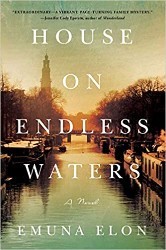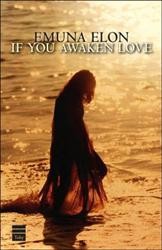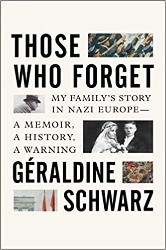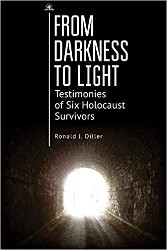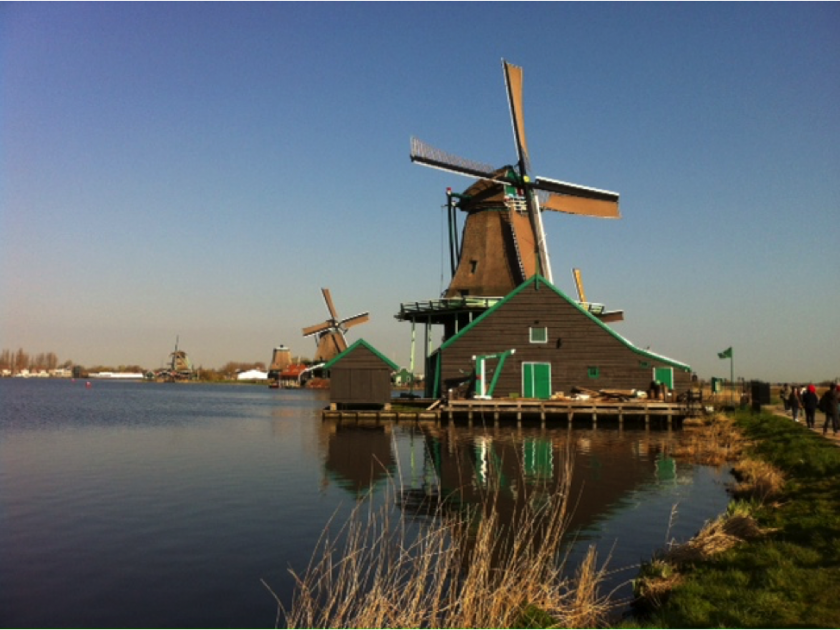
A village near Amsterdam like the one in which Leo was hidden during the war that Emnua visited. Image courtesy of the author
My first source of inspiration was Amsterdam itself; walking beside the canals of that breathtakingly beautiful city, I could easily picture the setting of my new novel, House on Endless Waters. I could imagine one of the main characters, young twenty-something Sonia Blum riding her bicycle in 1941 through these same streets, near the very same sculptured buildings and magnificent trees. There she was, and just like Sonia, I could hear the commotion of the pre-creation waters storming and bubbling under the paved roads and sidewalks, in their never-ending attempt to re-flood the world.
I was seeing what Yoel Blum, the protagonist of my novel, would eventually see during his stay in this very city. It centers on Yoel who discovers what really happened to his late mother, Sonia, during World War II. Unearthing the secrets she had carefully kept from him throughout his entire life, he confronts the truth of his own origins, thus revealing Amsterdam’s dark wartime history and the underground networks which hid Jewish children away from danger — but at a horrible cost.
Through Yoel’s writerly imagination, we witness Sonia’s life as a passionate young mother in Nazi-occupied Amsterdam — the impossible choices and betrayals she experiences, her strength as a woman with a family to protect.
In order to write this novel knowing about Amsterdam was not enough. I needed to actually experience the city, to feel it from within — in addition to putting time and effort into researching the Jewish community and the harsh reality it confronted during World War II,. During the novel Yoel travels back to Amsterdam — where he was born — and I travelled there as well.
Like Yoel, I found myself a non-expensive room in a small hotel in Amsterdam’s Old South. That was the part of the city in which I intended to situate my characters, since I knew it was where many local Jews — who could afford to move out of the Old Jewish quarter east of the Amstel River — had established their homes just before the war. And exactly like Yoel, I too chose that specific hotel room, on the corner of the fourth floor, because it had a narrow balcony overlooking the backs of two rows of houses. That balcony was most helpful for Yoel and for me; the view seen from it became the setting of our stories, and one of those houses turned out — so we decided — to be the house of the two families around which our plot revolves.
I spent many days walking the streets of the city, taking in the glittering canals and picturesque buildings, watching and listening, and allowing the story to reveal itself to me from amidst the sights and the sounds that surrounded me. Seeing the symbiotic attachment between the Dutch and their bicycles helped me understand what it must have meant in 1942 to be denied even your right to ride a bicycle, just because you were Jewish. Studying the flow of everyday life in Amsterdam’s schools, markets, and museums, as well as interactions in playgrounds, coffee houses, and private homes — as far as can be seen in back yards or through the big front windows that most Dutch families always leave exposed — enabled me to imagine what it was like when all this everyday life was cruelly and forcefully interrupted.
I spent many days walking the streets of the city, taking in the glittering canals and picturesque buildings, watching and listening, and allowing the story to reveal itself to me from amidst the sights and the sounds that surrounded me.
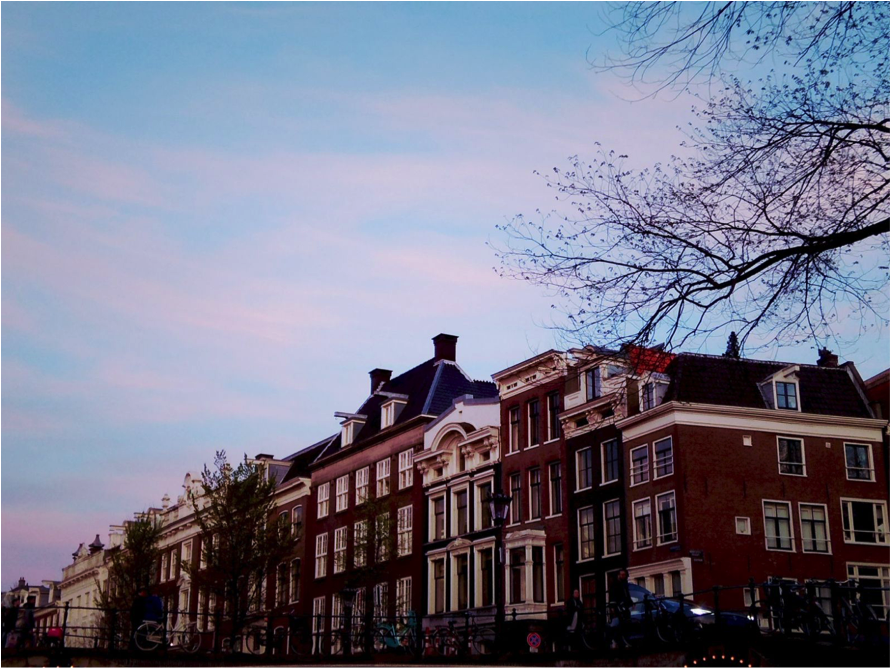
Image courtesy of the author
On that same street, named after a Flemish sixteenth-century musician — as are other streets in the proximity of Amsterdam’s magnificent Concert Hall— the thriving Jewish community of the 1930’s had established the Jewish Hospital, and right next to it a big, new synagogue. No one could have predicted then that the metaphoric waters would rise and chaos would prevail. Even later on, when Dutch Jews heard about what was already happening to Jews in Germany and in Poland, they were absolutely sure, as quoted, that “such things can never happen in Holland. No, not in Holland!”
That is also the unfortunate error of some characters in my novel as they obey the new laws inflicted upon them: enlisting as Jews, reporting all of their assets to the authorities, purchasing yellow badges and wearing them and believing that no harm will be done to them as long as they respect the laws and orders.
Whenever I walked past the central town square from which Jews were sent every day to the east — to their deaths — I visualized them sitting on rows of benches looking like people about to embark on an enjoyable excursion or a nice vacation in the bosom of nature; special attendants move among them speaking to them with exaggerated politeness, making sure they have everything they need and even serving them hot tea sweetened with sugar cubes so they will feel at ease and harbor no worries, no suspicion, no desire to cause unrest that might bother passersby and disturb the peace. A terrifying musing based on my research stating people were treated well even as they were being rounded up, to avoid any commotion.
I did my best to convey in this novel the sharp contrast, which I felt as a constant physical pain, between Amsterdam’s peaceful beauty and the things that happened within it not so long ago.
The search for one’s identity – in the context of self, of family, and of personal and national history – is probably the essence of every story and of every work of art.

Emuna takes a picture of a fallen tree in Vondelpark, mentioned in the story. Image courtesy of the author
Writing my story about the author Yoel writing his story reminded me of the famous lithograph “Drawing Hands” by the Dutch artist Morits Cornellius Escher, in which two human hands are seen drawing each other. It was I who invented Yoel and his mother Sonia and led them step by step through the story. But at the same time, as often happens in the process of writing, the story was leading me to unexplored areas in my own soul and telling me things about myself which I had not been aware.
Yoel works hard “to refine his characters so that each of them is Everyman, to write them so that each of their gestures contains every human gesture that had ever been and will ever be. To formulate the core of things. The very core.” As do I, though the fact that we keep writing new books proves that we both feel we must keep trying.
The search for one’s identity – in the context of self, of family, and of personal and national history – is probably the essence of every story and of every work of art. Yoel seems to be planted in a successful, sheltered life, surrounded by his work and his family, but deep inside himself he always carried this sense of strangeness, of not belonging, the feeling that his mere existence is a wound.
House on Endless Waters is about exposing the foundations — universal, national and personal, circle within circle — of a human life in the wake of the Holocaust: the tragedy of the Jewish people and an extremum of Humanity. One example can be seen in a scene during which Yoel observes a woman who fears going into an airplane — and thus detaching from the seemingly-stable ground — and the novel goes on to show that nothing in this world is really stable.
Every work of art is a confrontation with the initial chaos, with the endless waters lurking under every house, under every human fortress of permanency and belonging – even under Yoel’s house in Jerusalem that is built not on a canal but on solid rocks.
Emuna Elon is an internationally bestselling, critically acclaimed novelist, journalist, and women’s activist. Born to a family of prominent rabbis and scholars, she was raised in Jerusalem and New York. She teaches Judaism, Hasidism, and Hebrew literature. Her first novel translated into English, If You Awaken Love, was a National Jewish Book Award finalist.
